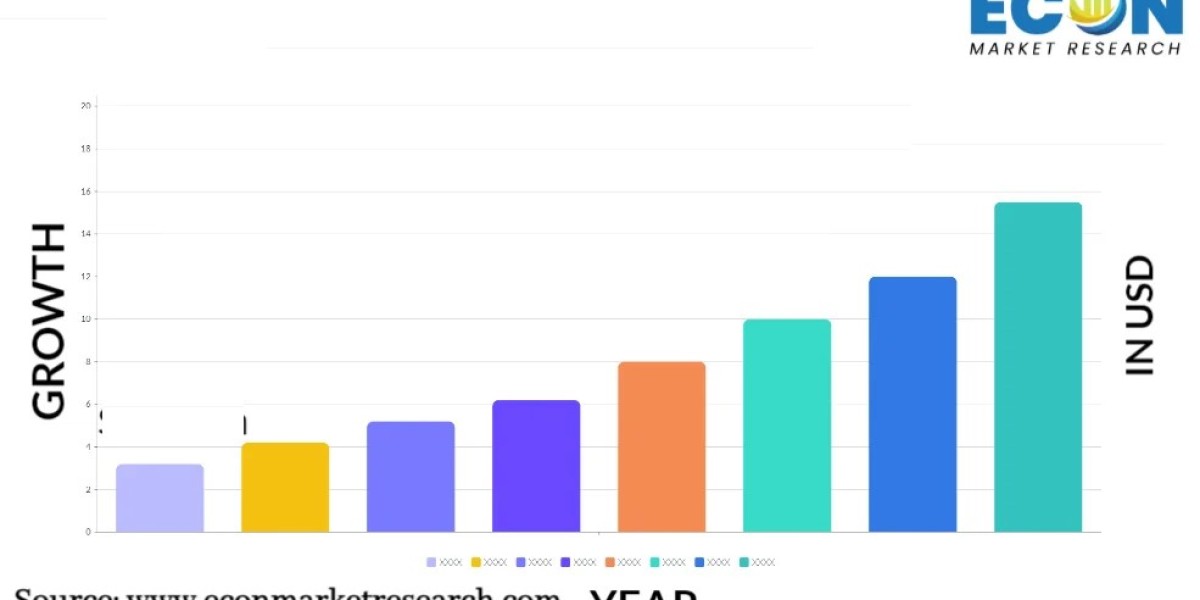Digital textile printing is a revolutionary technology in the fabric and apparel industry, enabling the precise application of designs directly onto textiles using digital inkjet printers. Unlike traditional methods such as screen printing, digital textile printing offers unparalleled flexibility, reduced waste, and high-resolution output. This technology is transforming the industry by meeting demands for customization, speed, and sustainability, positioning itself as a cornerstone in modern textile manufacturing.
More info : https://www.econmarketresearch.com/industry-report/digital-textile-printing-market/
How Digital Textile Printing Works
The digital textile printing process involves transferring digital designs onto fabrics using specialized printers and inks. Here's a breakdown of the steps:
- Design Creation: Designs are created using graphic software, allowing for intricate patterns and unlimited color options.
- Pre-Treatment: Fabrics undergo pre-treatment with chemicals to enhance ink absorption and fix the design.
- Printing: Using digital inkjet printers, the design is directly applied to the fabric. This eliminates the need for screens or stencils, reducing setup time.
- Fixation: Heat or steam is applied to set the ink, ensuring durability and color vibrancy.
- Post-Treatment: Fabrics are washed and finished to remove excess chemicals and achieve the desired texture.
This process is adaptable to various fabric types, including cotton, polyester, silk, and blends, making it versatile across applications.
Types of Digital Textile Printing
Digital textile printing can be categorized based on the type of ink and fabric compatibility:
- Reactive Printing: Ideal for natural fibers like cotton and linen, offering vibrant colors and excellent washfastness.
- Acid Printing: Used for protein-based fibers such as silk and wool, delivering rich hues and sharp details.
- Disperse Printing: Compatible with polyester fabrics, it ensures deep color penetration and high durability.
- Pigment Printing: A versatile option for a wide range of fabrics, requiring minimal pre- and post-treatment processes.
Each method offers unique advantages, catering to specific industry needs and design requirements.
Advantages of Digital Textile Printing
Digital textile printing provides several benefits over traditional printing techniques:
- Customization: Offers endless possibilities for personalization, catering to small batches and unique designs.
- Eco-Friendliness: Reduces water and energy usage, producing minimal waste compared to conventional methods.
- High Resolution: Achieves photo-quality prints with precise detailing and vibrant colors.
- Cost-Effectiveness: Eliminates the need for costly screens and setups, particularly beneficial for short runs.
- Speed: Enables faster production cycles, meeting the growing demand for on-demand manufacturing.
These advantages make digital textile printing an ideal choice for fashion, home décor, and industrial applications.
Applications of Digital Textile Printing
The versatility of digital textile printing has opened new possibilities across industries:
- Fashion: From custom garments to designer collections, digital printing caters to the fast-paced demands of the fashion world.
- Home Textiles: Includes printing on curtains, upholstery, and bedding, offering limitless design options for interior décor.
- Sportswear: Combines functionality with aesthetics, enabling high-performance fabrics with intricate designs.
- Promotional Items: Custom-printed banners, flags, and merchandise benefit from the technology’s flexibility and speed.
- Technical Textiles: Expands into automotive, medical, and industrial applications where precision and durability are paramount.
Challenges in Digital Textile Printing
Despite its advantages, digital textile printing faces certain challenges:
- High Initial Investment: Advanced printers and inks can be expensive, making adoption a hurdle for small-scale businesses.
- Limited Production Speed: Traditional screen printing is still faster for very high-volume runs.
- Technical Expertise: Requires skilled operators to manage equipment and optimize design outputs.
- Ink Costs: Specialized inks are costly, particularly for high-quality or niche applications.
- Fabric Compatibility: Some fabrics require extensive pre-treatment, adding to production time and costs.
Addressing these challenges through innovation and economies of scale is key to wider adoption.
Market Trends in Digital Textile Printing
The digital textile printing market is experiencing significant growth, driven by several trends:
- Demand for Sustainability: Consumers and brands are prioritizing eco-friendly practices, making digital printing a preferred choice.
- Customization Boom: The rise of personalized products is fueling demand for versatile printing solutions.
- Technological Advancements: Innovations in printers, inks, and software are enhancing quality and efficiency.
- E-Commerce Growth: The surge in online retail is driving the need for fast, custom textile production.
- Global Expansion: Developing regions are adopting digital textile printing, spurred by rising disposable incomes and fashion trends.
Future Outlook
The future of digital textile printing looks promising, with continuous advancements shaping the industry. Emerging technologies such as AI-driven design optimization, smart textiles, and advanced ink formulations are expected to redefine the capabilities of digital printing. Furthermore, the integration of digital printing with Industry 4.0 practices will enhance scalability, reduce waste, and enable mass customization.
Phone Number: +1 812 506 4440
Email : [email protected]









